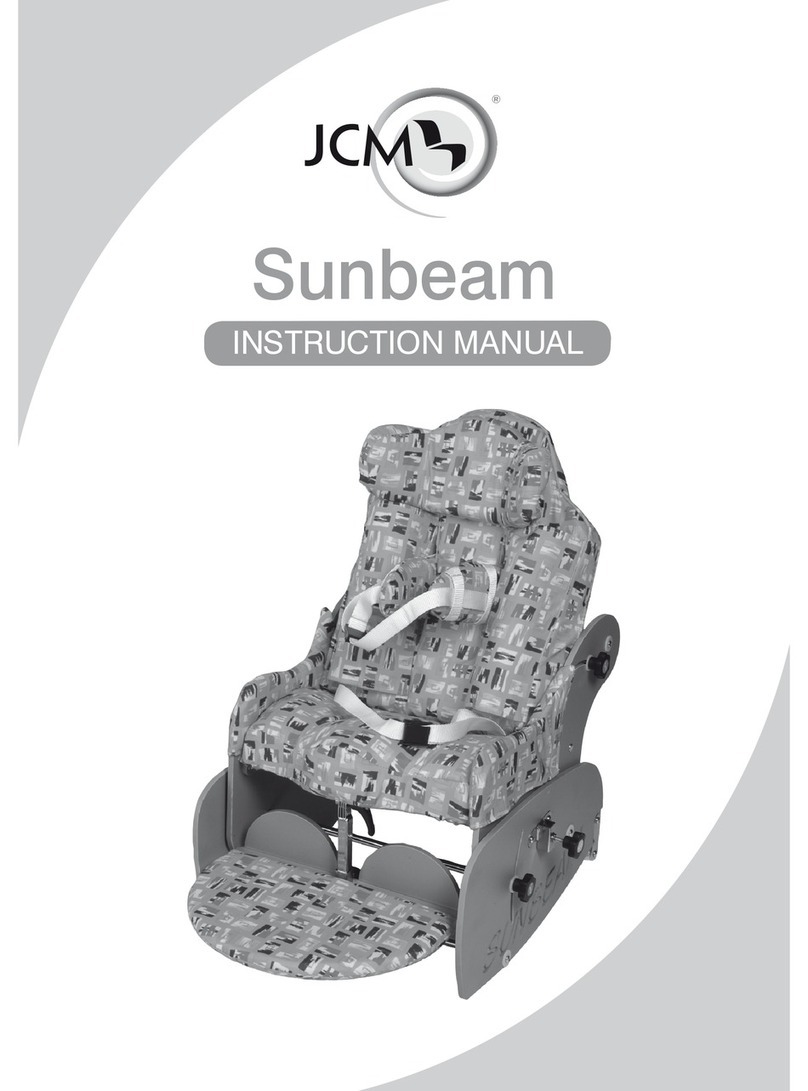
SATURN CHAIR INSTRUCTION MANUAL
Introduction
Please read all the information contained in this manual before first using the Seating System and retain for future
reference.
The Saturn Seating System is available in four sizes, all of which are on a moveable base and offer a vast array of
positional adjustment. The seating system is designed to provide comfort and postural support and as such is
supplied via qualified professionals who will have undertaken the necessary adjustment to provide the required
support for the individual user. The seating system should therefore never be adjusted or used by any other person
without the input from a suitably qualified professional person. The seating system is not intended for those who
have significant athetosis.
The following pages provide guidance on the versatile adjustment for reference by these professionals, but also they
provide information about how the seating system should be used, maintained, and which parts should be regularly
checked for security of attachment.
Within the manual there are important points to note which are identified by the following symbol:
IMPORTANT
The degree of maintenance required is largely dependent upon the frequency of use, how active the user is, and the
effects of others who mistakenly operate this chair. In some instance, daily checking of security and correct
adjustment may be necessary. If it is likely that the hand-wheels will be repeatedly loosened, JCM can supply Allen
Key Bolts as an alternative. We strongly recommend this if there is a danger from those in the vicinity of the user.
IMPORTANT
The mobile base is intended for indoor use only. Whilst the seating system is stable on a 5-degree slope, even in its
most upright position, it is not intended to be used in this manner. It is however, intended to be used on a level flat
floor, where movement is confined to a single room. For safety ALWAYS lower before moving.
NOTE: that heavy items on the tray will affect stability. The fitting of anything other than the standard JCM tray
may substantially affect the stability of the seating system and should therefore be checked before issue.
IMPORTANT
Note the cleaning, care and maintenance information on page 11.
IMPORTANT
If at any time it is noted that areas of the Users skin remain red after being out of the seating system for 10 minutes,
contact the qualified professional who performed the fitting. It may be a sign that there is excessive pressure being
applied by the padding. This could occur due to initial use, where further corrective adjustment may be needed, or
due to growth of the child.
PAGE 1




























